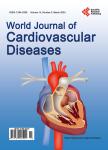How many systolic and diastolic variables must be measured in elderly patients with symptoms of heart failure?
如何收缩压和舒张压的变量必须测量在老年患者心脏衰竭的症状吗?作者机构:Department of Medicine-GeriatricInstitution of Public Health and Clinical MedicineUmea UniversityUmeaSweden Department of EpidemiologyUmea UniversityUmeaSweden
出 版 物:《World Journal of Cardiovascular Diseases》 (心血管病(英文))
年 卷 期:2012年第2卷第2期
页 面:102-109页
学科分类:1002[医学-临床医学] 100214[医学-肿瘤学] 10[医学]
主 题:Echocardiography Systole Diastole Elderly Primary Health Care
摘 要:Objectives: To explore the concordance and the feasibility of obtaining systolic or diastolic variables of left ventricular function in elderly patients with heart failure symptoms. Methods: One hundred twenty four patients with symptoms of heart failure (mean age 77 years, 70% females) were included in a cross-sectional, explorative study. Nineteen echocardiographic variables (7 systolic and 12 diastolic) were measured. Results: Overall, feasibility ranged from 93% to 100% for 15 variables and was 48% for mitral regurgitation dp/dt(MRdp/dt), 66% for the difference between pulmonary AR-dur and mitral A-dur, 81% for the ratio between early and late mitral inflow velocity (E/A), and 76% for tissue Doppler imaging late dia-stolic velocity (TDI A’). Concordance was very good/ good in 83% and poor/missing in 17% of systolic variables, whereas it was very good/good for 67% of diastolic variables and poor/missing for 33%. Factor analysis reduced systolic variables to two factors that explained 69% of the total variance in systolic function. Conclusions: Low feasibility for some and questionable concordance of especially diastolic variables questions the rationale for routinely measuring a high number of echocardigraphic variables. The results of the factor analysis further strengthen the possibility of reducing the number of measured variables. The clinical value of such a reduction needs to be validated.



